Josh Rossi is a Los Angeles-based photographer who specializes in commercial, entertainment, and advertising images. Born in Florence, Italy, Josh was obsessed with art as a child, but discovered his true passion at age 22. Soon after publishing some of his early work and getting an enthusiastic public response, Josh left his 9-to-5 job to become a professional photographer. His clients have included Adobe, Acura, Champion USA, Wacom, Mountain Dew, Daymond John, Glenn Beck, John Lee Dumas, Lindsey Stirling and many others. Josh also runs the popular tutorials website Composite Planet.
I recently spoke with Josh about his journey into the world of commercial photography, how he uses influencer marketing to book big-name clients, and what advice he has for new photographers looking to break into the industry.
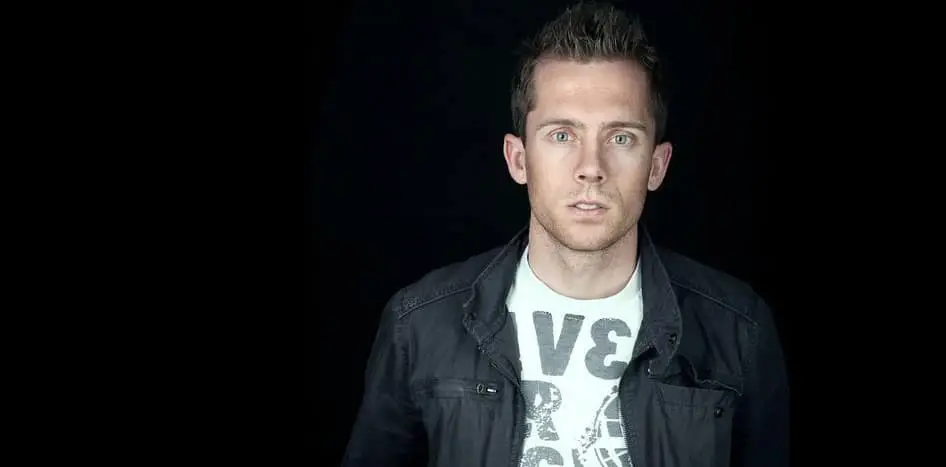
LEX VALISHVILI (LV): How did you get into photography in general? I read that originally you were a videographer, but the journey took you through construction work and advertising school in Miami.
JOSH ROSSI (JR): I started off as a wedding photographer. I came home from school and I had a friend that was into advertising—and I had never done anything creative before—and he saw some of my videos that I had just done for fun, and said, “Hey, you can make money doing this.” That’s when I got into video work, and that started building my vision toward photography. I did that for many years, worked on some big productions, and at some point I wanted to do something more creative. With video, you have to rely on a lot of different pieces—directors, art directors, producers, lighting guys—you can’t do everything yourself. I wanted to do everything myself, so I started thinking, “Ok, what can I do?”
Advertising came to mind, so I went to advertising school. That’s where I started getting into photography. I didn’t really want to become a wedding photographer, necessarily, but when I got into ad school I was really turned on to these really big advertising photographers that did so much cool, creative work. From there, I didn’t really do any of my advertising homework—I would just do my photography homework, my own homework. I would spend hours looking online at my favorite photographers, trying to copy and match their styles, trying to create new stuff, push boundaries—stuff like that.
At that point, I decided that I didn’t really want to go into advertising, so I left the school and came back home and tried to live the photographer’s life. I didn’t have a clue how to do it. After about a month, I realized, “crap—I need to get a job.” So, I got a job in construction. It was cool at first, because I love jobs where you learn a lot. I learned a lot about building houses, I was getting stronger, but after a year, I got bored. I had to get out and do something.
From there, I got into wedding photography, because that’s where the money was, right away. I went to portrait photography, and then finally went into commercial. That’s where things started taking off.
LV: How did you transition from wedding photography to commercial? I heard a story about your last bridal show, where you started actually showing your unique style.
JR: I was always doing this style of photography, but I had to do weddings for money because I didn’t really know how to get commercial gigs. I would show this stuff to my bridal clients, and they would say, “that’s really cool,” but they really didn’t know what to do with it. It’s like showing a Ferrari to a child—they think it’s nice and colorful, but they wouldn’t know how to drive it, the worth of it. That’s how I felt. These brides loved it, but they weren’t able to pay for it. At some point, I started pushing the boundary with my work, and it started turning from beautiful bridal stuff to more action-packed, commercial and advertising work that’s more eye-catching.
At my last wedding show, this lady came up to me. She was very fashion-forward, and she was some sort of editor for a magazine. She was very intimidating. She came up to me and said, “What are you doing here?” In kind of a rude way. I asked her, “What do you mean?” She’s like, “No, what are you doing here—why are you here at this show? Your work is not bridal. You’ve got to push the boundaries. You’ve got to go after what you really want. What do you want?” I told her I wanted to do advertising photography. “Go do that,” she said, “stop wasting time doing what you don’t want to do.”
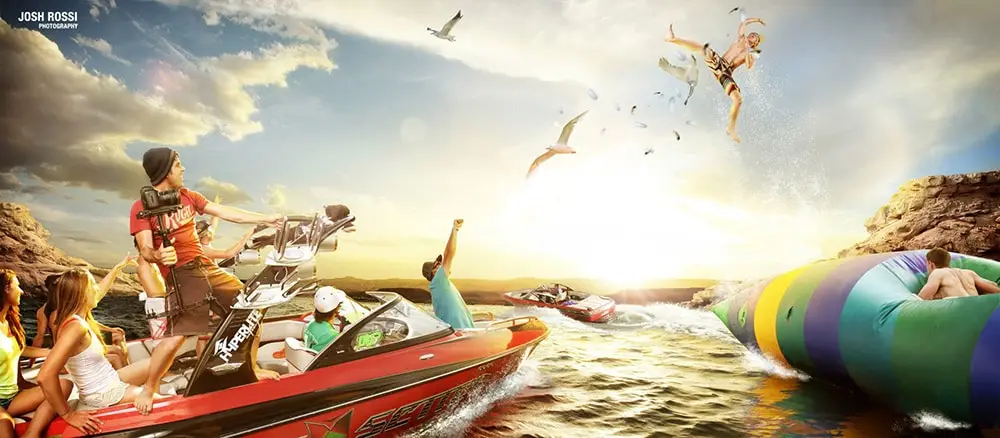
LV: At that point most of your paid gigs were weddings, but who was your first paid client? Did you find them or did they find you?
JR: I worked a lot in advertising school, so I started using those techniques to get work. It was simple stuff. I separated my portfolio—I put all my commercial work on joshrossi.com and all my wedding photography in a subfolder on a different site. They weren’t necessarily connected. So, when I sent people to my commercial site, they would believe I could do the work that they needed.
Before my first gig came, I was following ad agencies, looking for a way to get in. I tried to meet with people, and at some point I talked with a local agency. They liked my work, but they didn’t have a use for it at the time. I sent them an email, and I ended up posting a photo I did on their Facebook, sort of as a reminder or update—“Hey, here’s something I did recently.” Thinking about it now, it sounds like something not many people would do. From there, somebody saw it, they referred me to someone else, and I got my first gig that way—through Facebook.
My second gig came through a personal project. I wasn’t even looking for work. I just did this really cool James Bond 1960s-type series. I posted that on Facebook and I also tagged all the models. I tagged the models, the hair and makeup lady, and that got my name exposed to a wider audience because all the models shared it on their pages, the hair lady posted it on her page—everybody posted it. So, I came up with a strategy: the more people on a photo shoot, the better. I got another job off of that.
LV: Your portfolio is full of big names—Daymond John, Lindsey Stirling—and I attended your recent webinar about influencer marketing. Can you share a little bit of that, and what the main focus is?
JR: I came across influencer marketing by accident. If you talk to any photographer about marketing they’ll say the same thing, and it’s the same marketing that’s been done for the past 30–40 years: email people, meet with people in person. I thought there must be another way to do that, with the rise of social media and big influencers. Like I said, this was by accident, but I still had that thought in my mind.
I reached out to one guy on YouTube who was doing some really cool work, offered him a free photo shoot, and he got back to me within a couple hours and he wanted me to come onto his shoot. That was my first free gig. I didn’t think I was going to get anything out of it; I was just doing it because I thought it was cool and I wanted to be connected with people. After that, things blew up. I realized that he had a massive following, and I started getting people flooding in from all over. Just from that first shoot, I got work, even recently. I did that 5 or 6 years ago, and I just finished up work with someone who found me from that shoot.
After seeing the results from that, things clicked for me. I thought, “This is it. This is where I need to spend my time and my marketing dollars.” But this is just for me. Everybody’s different. I’ve gotten work through emails, personal connections, but this has been the most effective for me: influencer marketing, meaning working with someone who has large influence, or is influential over a small audience. They will post your images on their page, and that will get you exposure. There’s a lot more to that, but there’s the main idea.
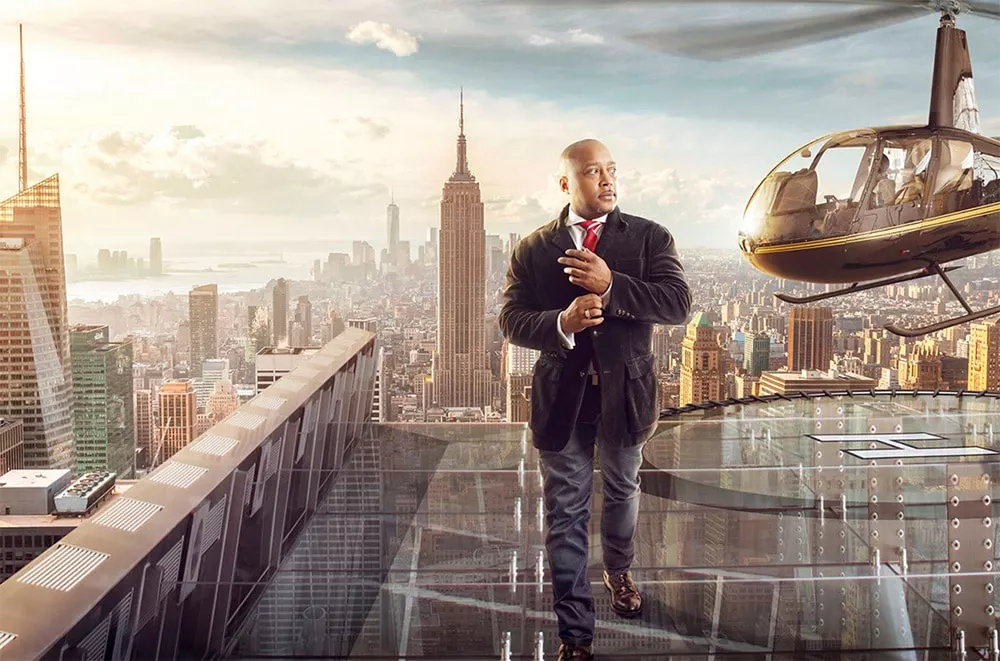
LV: How did you start working with Daymond John?
JR: Daymond John—same thing. It was through influencer marketing. There’s a ladder: you start at the bottom, and at some point you’re at the top with the bigger clients. It’s that progression. As soon as you get in with influencers, they introduce you to someone else. And that person might know someone at a big ad agency—they introduce you to them. The ad agency knows a celebrity and they’re doing a shoot, and then they hire you for a shoot.
The photography and marketing principles all apply, but we’re changing them at the beginning. Instead of attracting people through email, you’re attracting them through influencer marketing. And once you establish that relationship, that’s a whole other thing: How do we keep a client? How do we estimate correctly? There’s so much there. I know a lot of people who do influencer marketing, but they don’t make any money, because they don’t know any other principles. Influencer marketing is a big part of the equation, but then you have to know how to price, how to keep your client, how to upsell your client. This Daymond John job came from me working with a client almost ten times before. If I didn’t keep that client, Daymond John wouldn’t have come along.
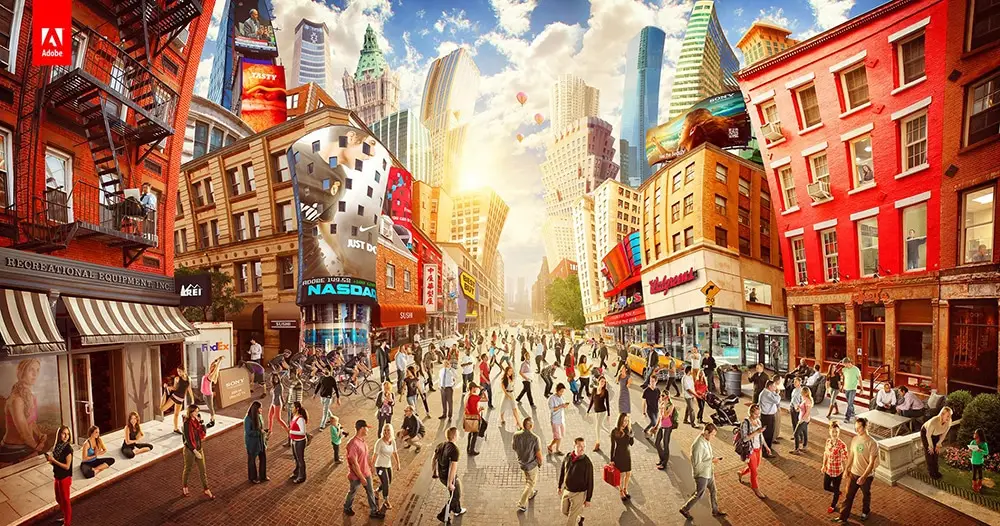
LV: I read your blog post about how to increase your price from client to client, but are there some standards? Your work is really unique—there’s not the standard 8-hour waiting period—and as you mentioned, you might spend 300 hours on one image. How do you price that? Is it based on the client and work, do you calculate the hours you spend, or is it more about the size of the project in general?
JR: It is about complexity, but you need to have a baseline so you’re not all over the place with clients. It’s difficult. You can’t just charge what you want. Some people at the beginning say, “I’ll charge you more because you’re a bigger client, or less because you’re a smaller client.” No. You have to get to the point where you have a one-day rate, an editing fee—there are a bunch of breakdowns you can make there—but you have to have solid pricing.
For me, it’s based on the complexity of the image. I have all my bases there, and then if they want a more complex image, I add on hours for editing, or I might need to shoot more days, so I’ll explain that to the client. There are also usage rights, so you could technically charge $1000 for a huge photoshoot with Mountain Dew, but then because they’re using those images all over the world in their advertising, you charge usage rights, which could be $50,000–$100,000. That’s where your money could come from. People do it differently, but I think the best way is to have a standard day rate, so you can work with many clients.
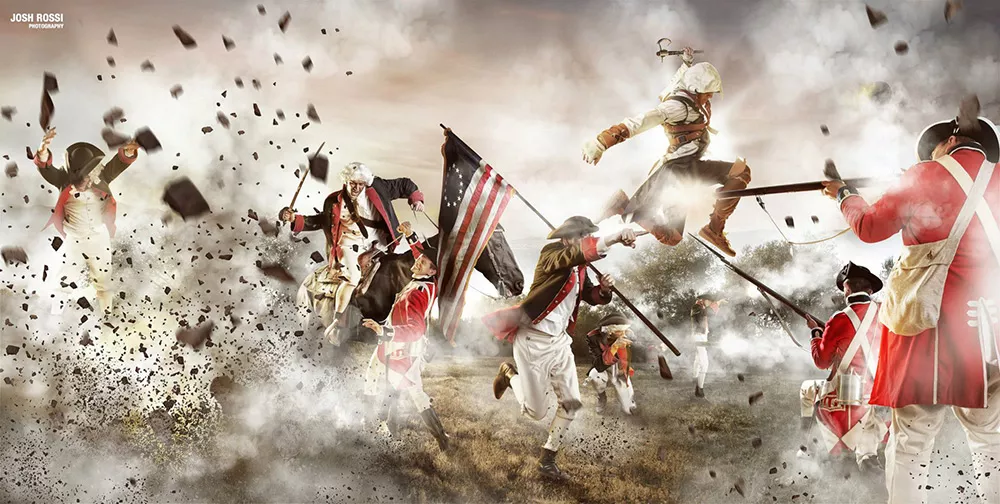
LV: What advice would you give someone just at the beginning of their career who wants to dive into commercial photography?
JR: Before, I was all about jumping in and doing the marketing—go meet people. If you’re beginning in commercial photography, the one thing I would say is make sure your work is commercialized. Make sure that what you have is attractive to your buyer. You could be a wedding photographer, you could have a bunch of cool portraits, and you might never get any work. Obviously, it depends on the client, but let’s say you want to do a big Coca-Cola shoot with some fashion images but you only have wedding or bridal shots—or you shot some cool stuff, like senior portraits—that’s not very attractive to the buyer because it shows that you don’t have much experience. You have to have the images they’re going to pay you for. I call it “commercializing your portfolio.” Make a Ferrari out of your portfolio. If you have a beater car, shine it up until it looks like Ferrari. You have to work on it a little bit. Take your car, clean it up, get new wheels, maybe change the paint color, and bam—you’re suddenly a sexy street car.
A lot of people jump into commercial photography and they don’t have the right work. I swear, I look at people’s work all the time and they want so much marketing advice—“How do I get work? How do I make more money?”—and I just have to stop them and say, “Look, the number one thing is portfolio.” It’s not just the work, but also how you organize your portfolio, how people see it. It should be an experience throughout your website. Colors should match. You should have smooth transitions throughout, so it’s a good experience. Just like when you’re video editing: you don’t want people to see random cuts—it has to be an experience. It has to flow visually.
LV: In terms of equipment, what’s the bare minimum you would suggest for commercial photography?
JR: You need lights. You might be shooting an overcast day, but you need it to look like the sun’s out. If you have money, get the right equipment. Get three or four lights set up, get a nice camera, like a Sony a7R. It’s pretty nice camera—36-megapixel, mirrorless, full-frame—but it’s not a $60,000 camera. I don’t need a $60,000 camera, even though I’d love to have it, but you don’t need it. That’s really the basics. I carry all my equipment in three bags, and I can set up by myself. It’s not complicated. I know photographers who have so much gear and their images still suck. I shot with three speedlights for a while, and that’s how I built my portfolio at the beginning.
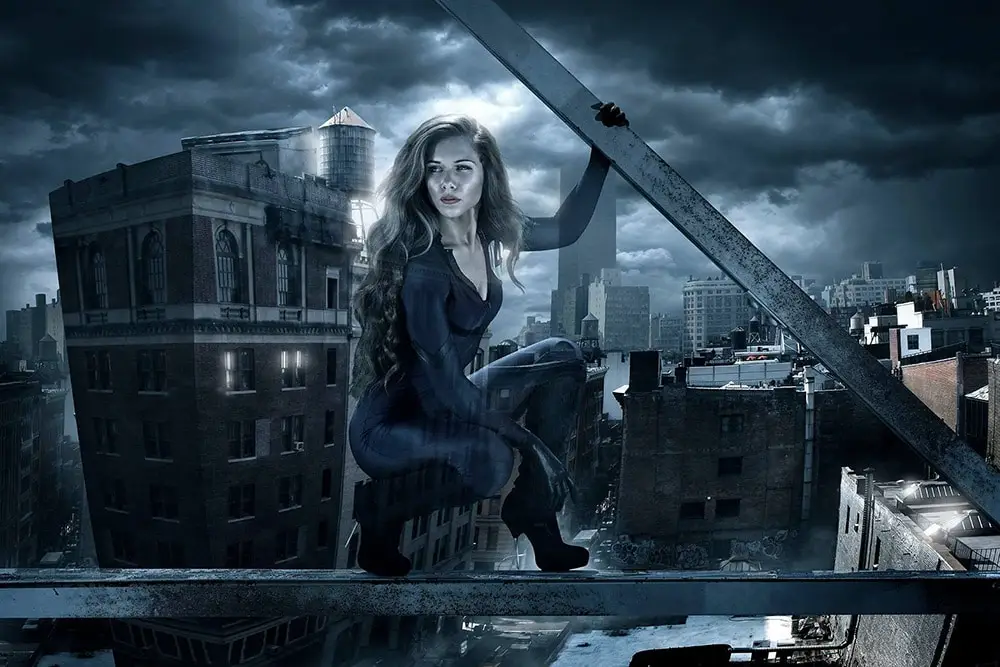
LV: Canon or Nikon?
JR: Sony. I’ve used everything, but as far as image quality goes, Sony looks more digital. I don’t know how to explain that, but it has a bluish-green tint to the image, whereas Canon has a warmer tone when it processes to JPEG.
LV: Last question: Do you have a favorite quote or saying?
JR: One that I say a lot: “The sooner you become fearless, the quicker things happen.” I love that. The other one I love is “the road to success is failure.” It’s about being fearless and expecting that you’ll fail.